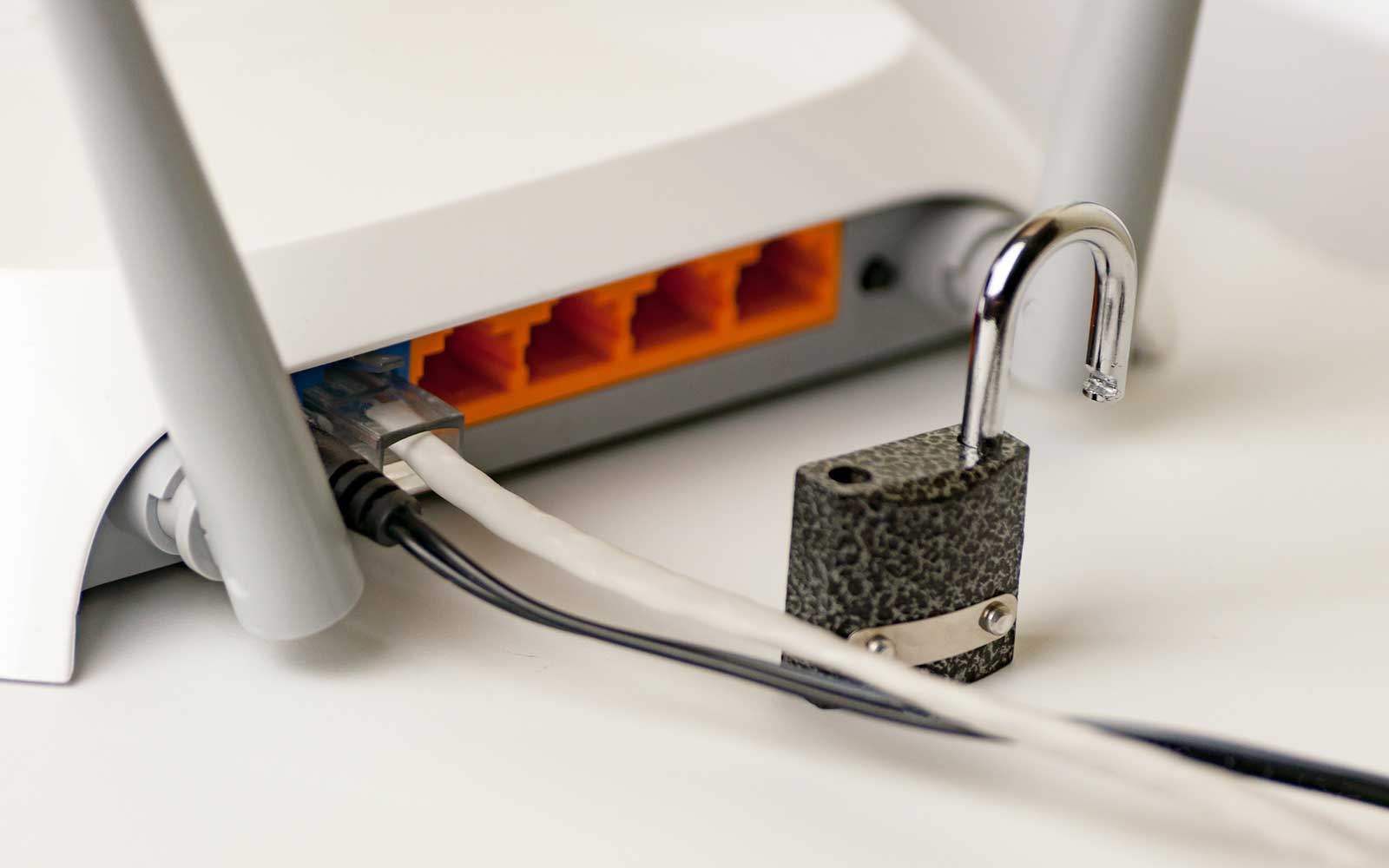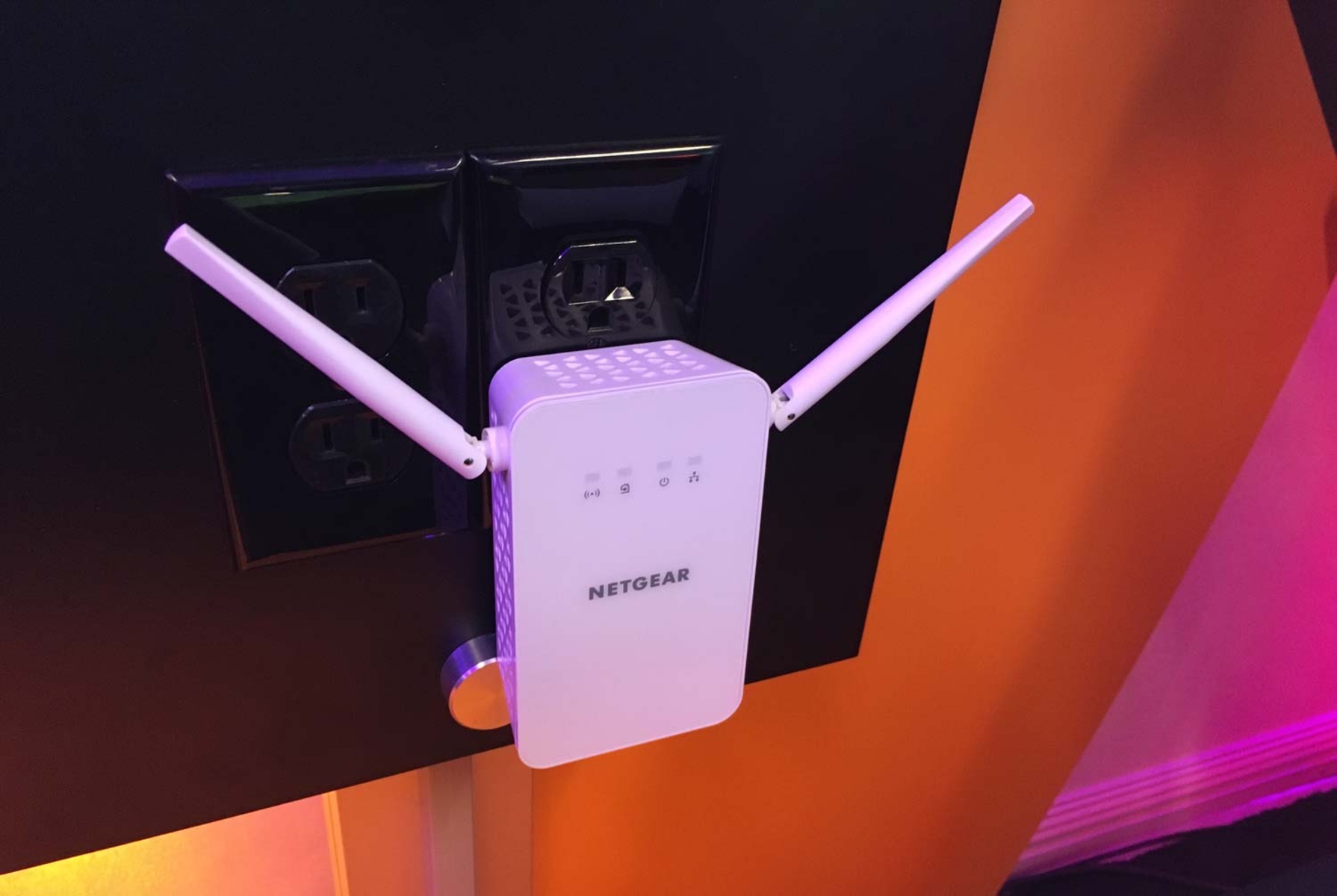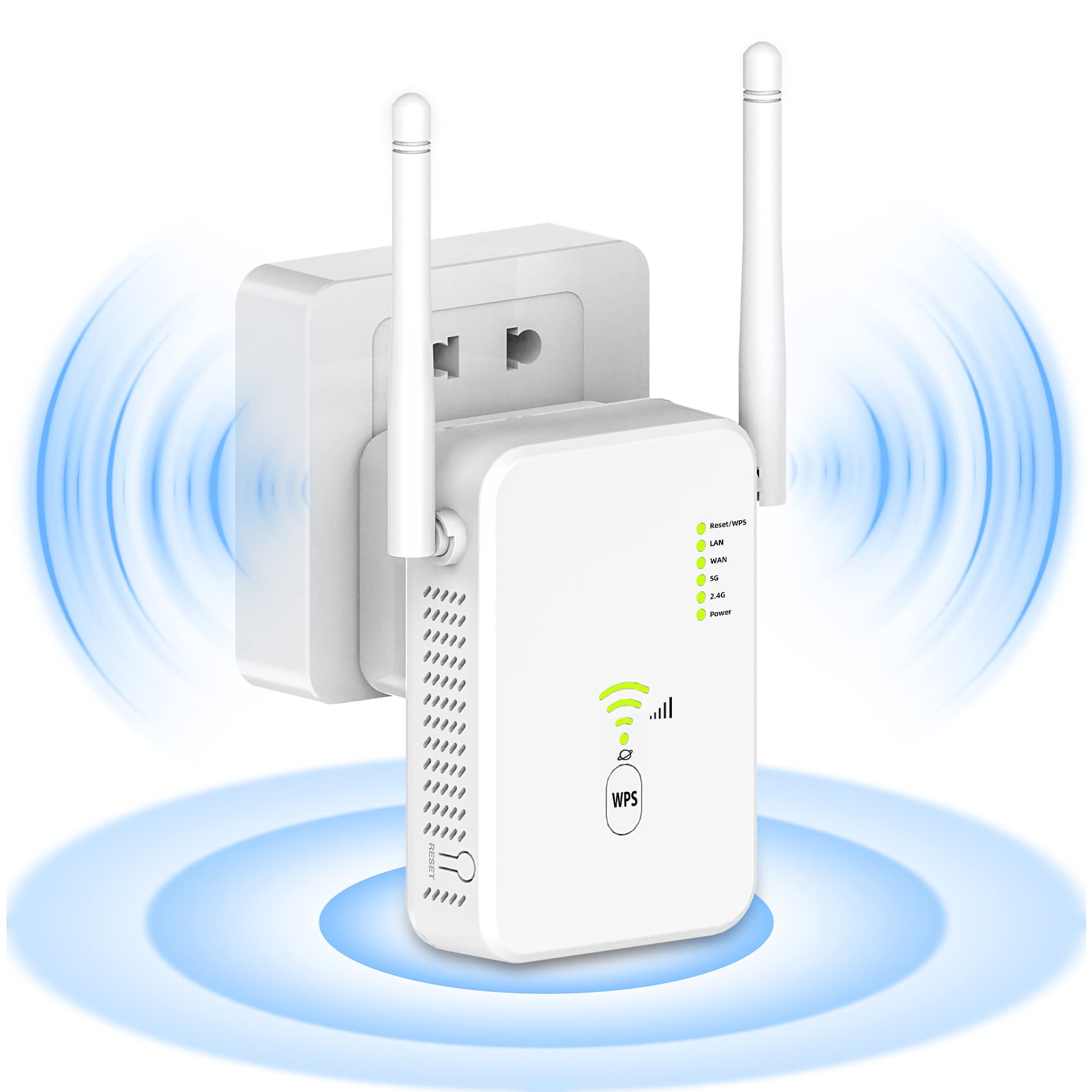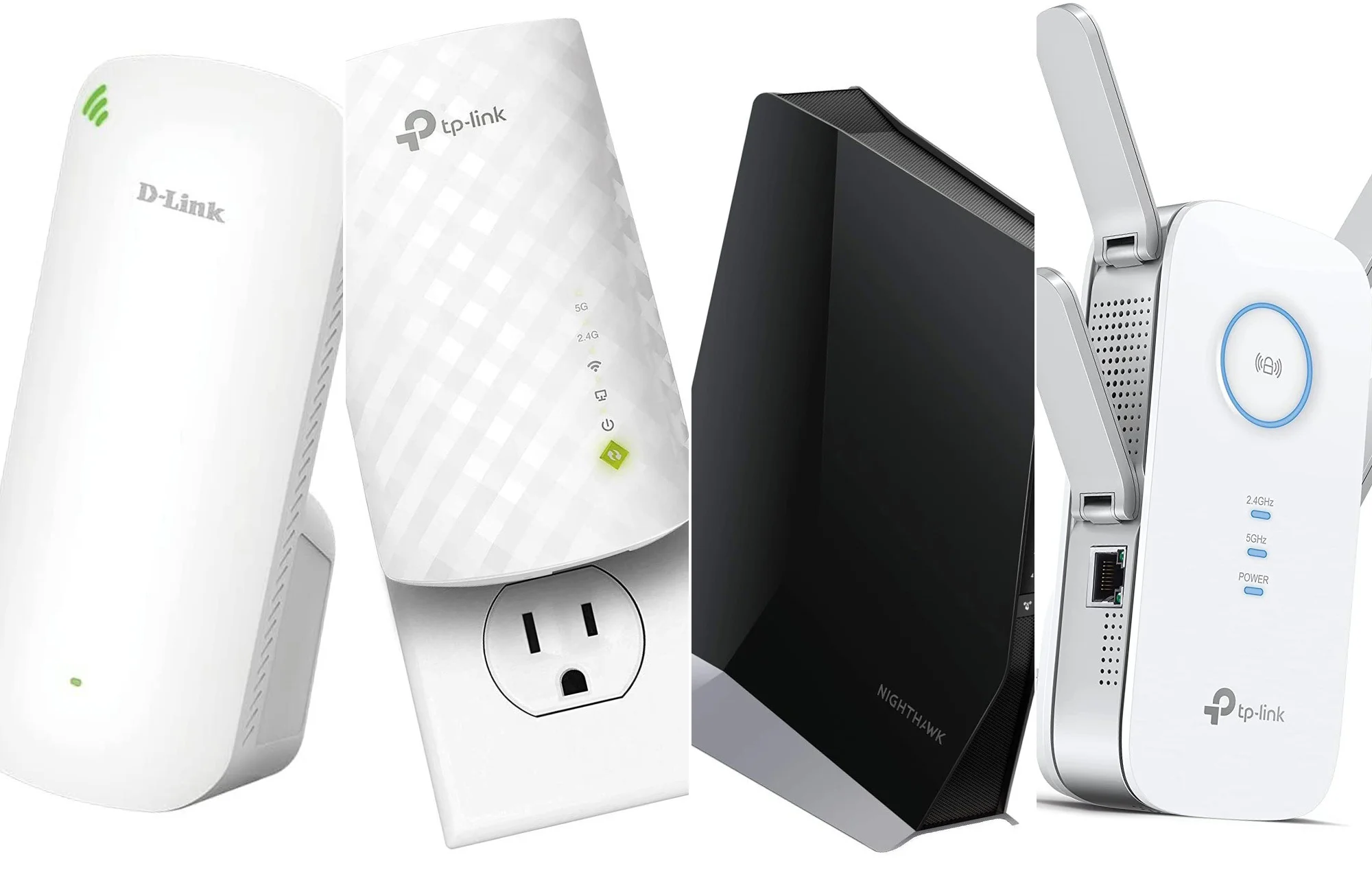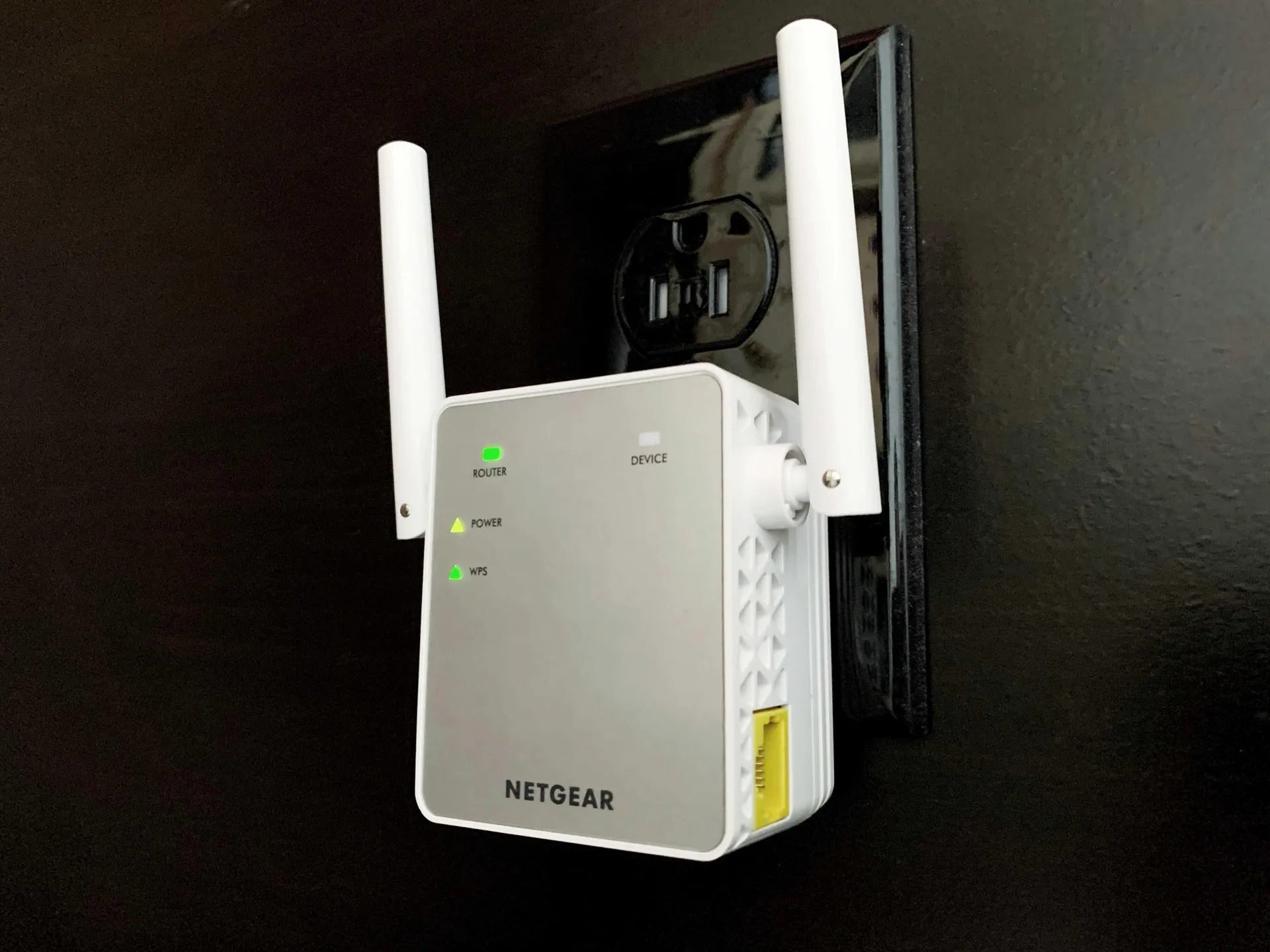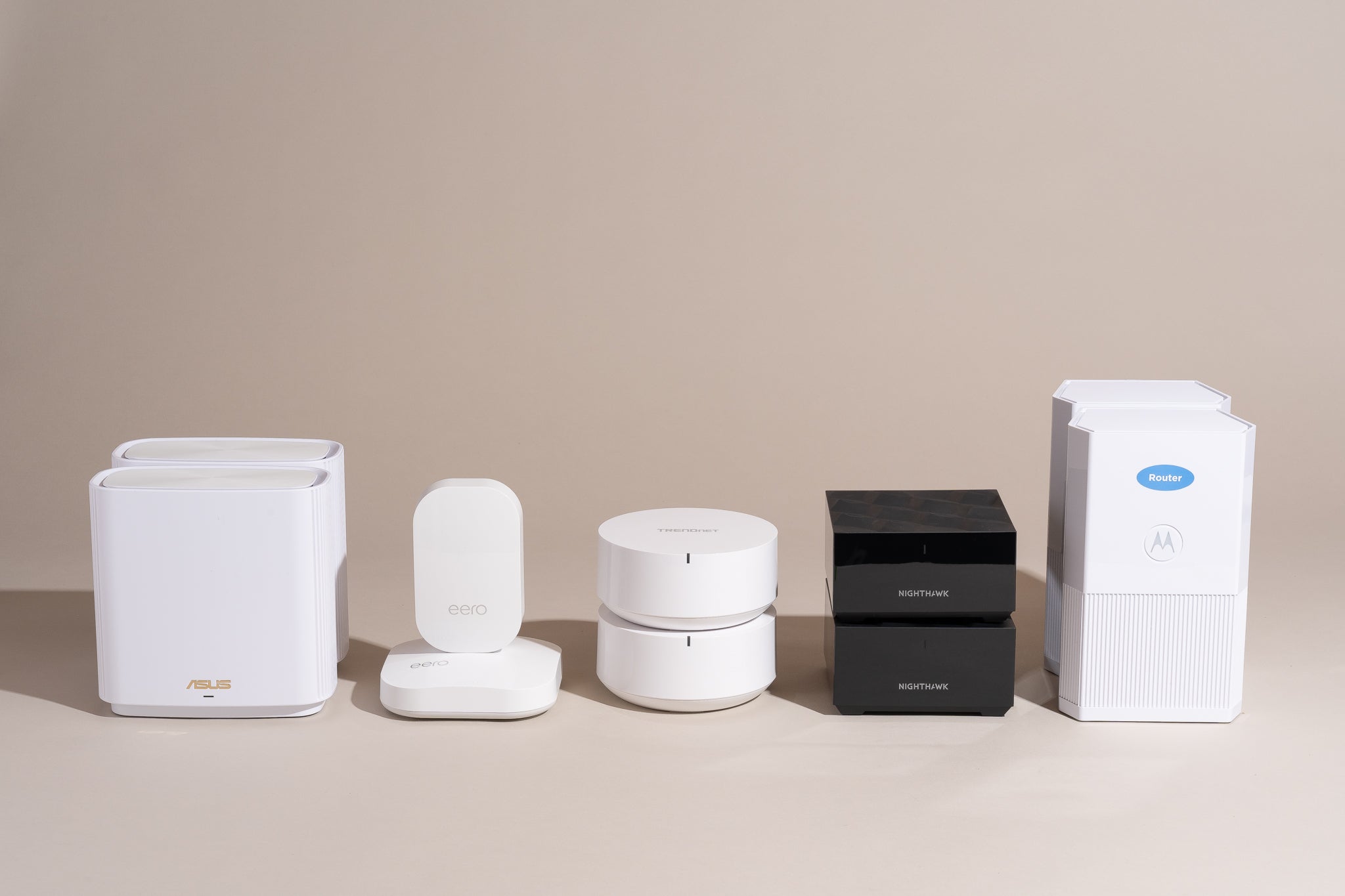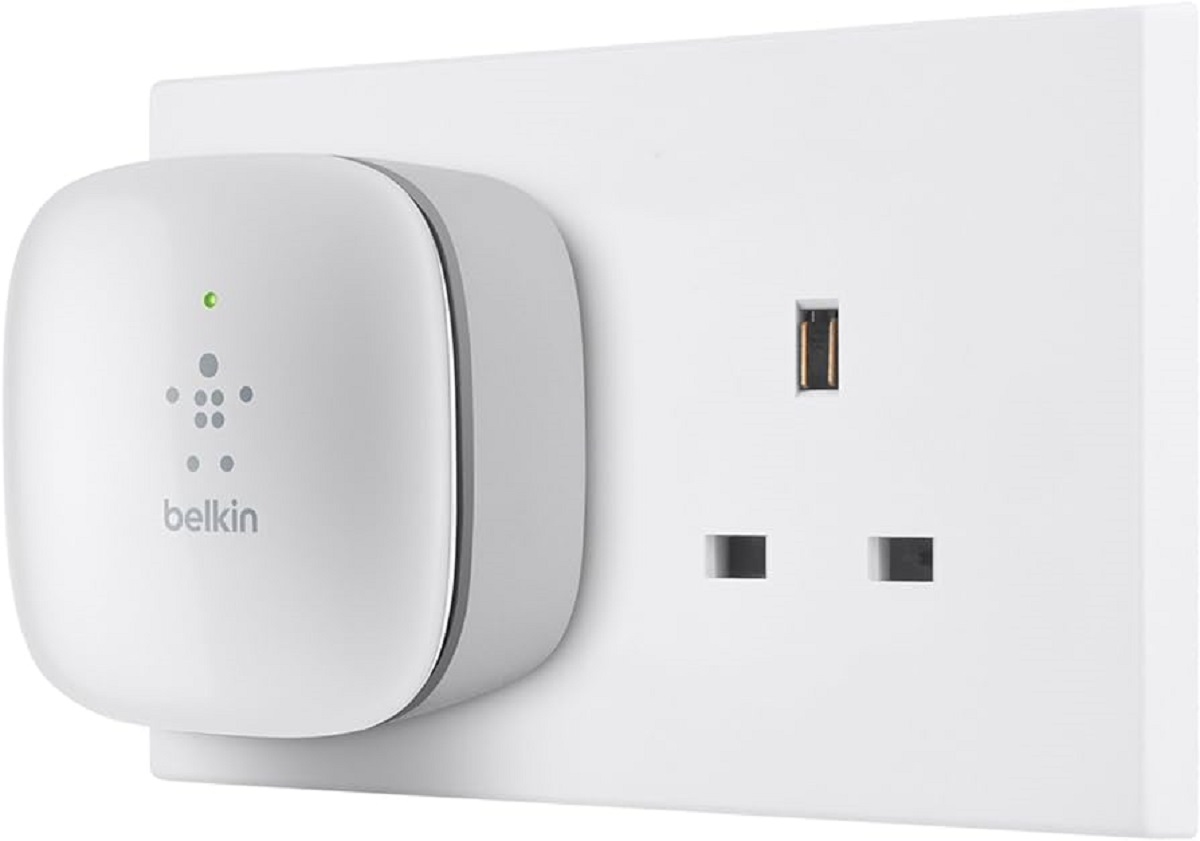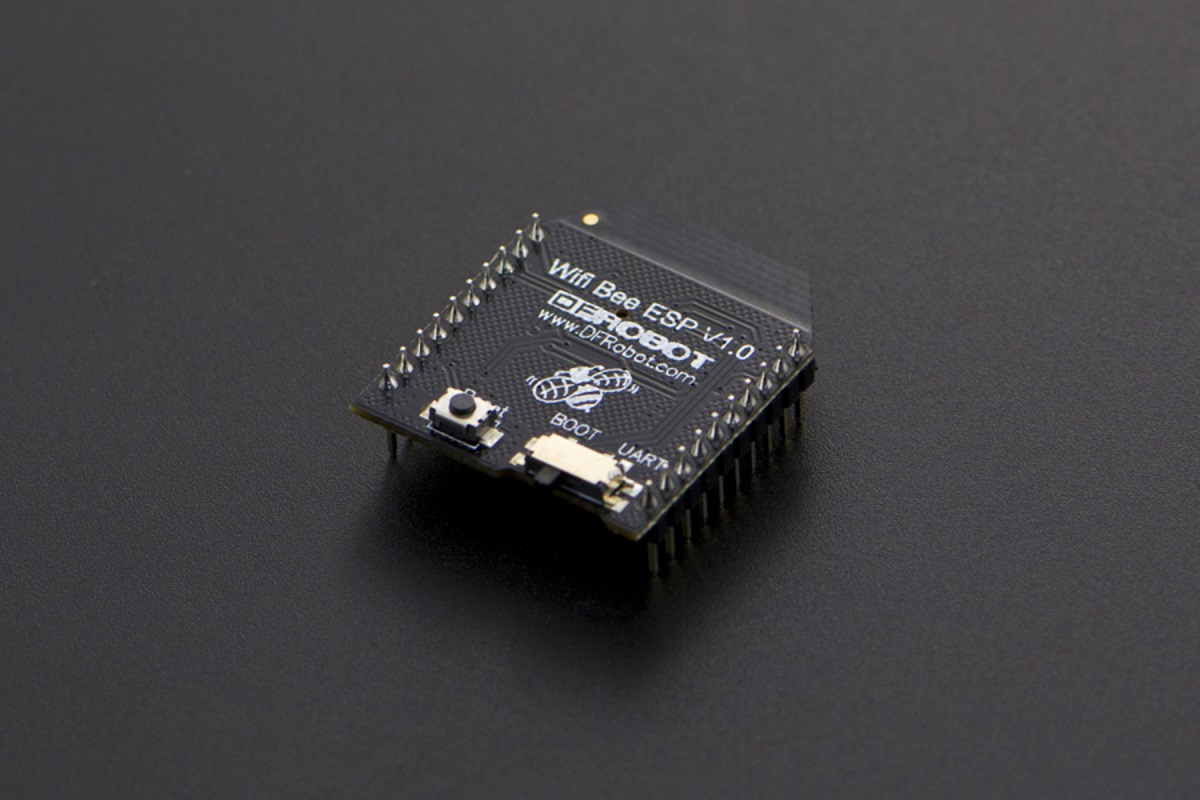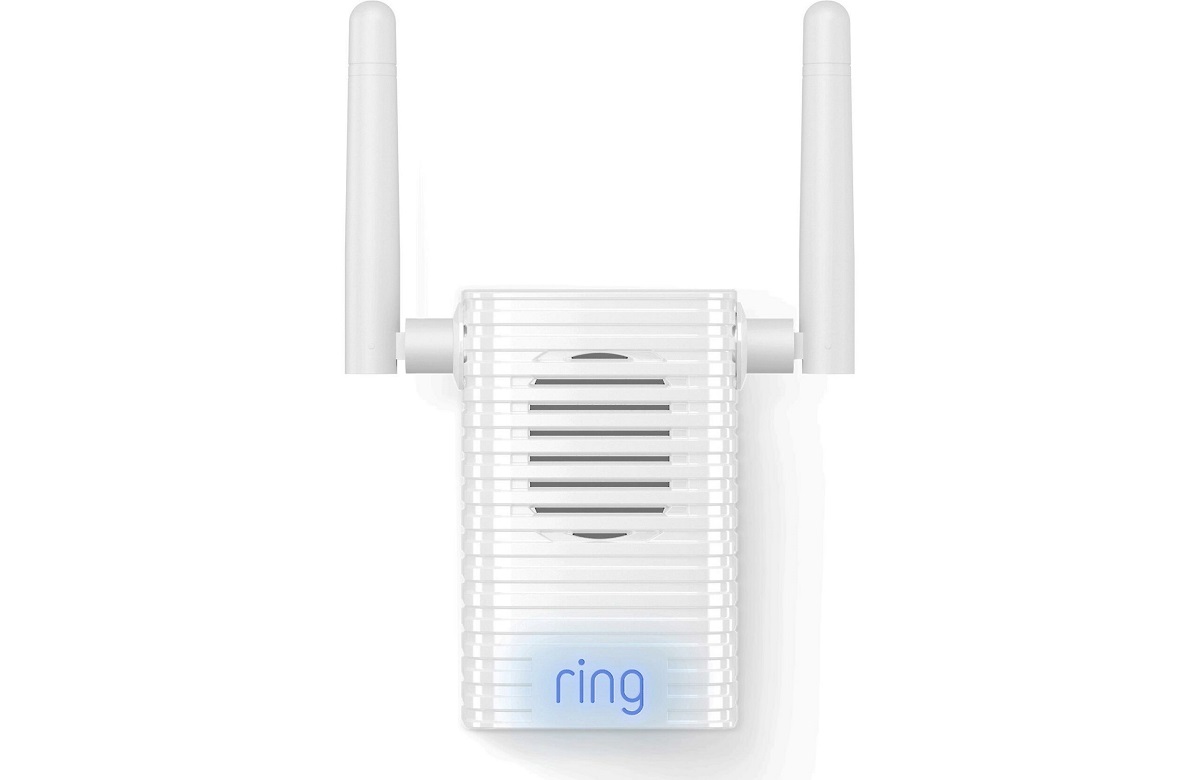Introduction
Wifi networks have become an essential part of our daily lives, connecting us to the online world seamlessly. However, with this convenience comes the need for security. The term “secure wifi” refers to a network that is protected from unauthorized access, ensuring that your data remains private and your connection is not compromised.
In today’s digital age, the concept of secure wifi has become increasingly important due to the rise in cyber threats and hacking incidents. With sensitive information being transmitted over wireless networks, it is crucial to understand the various types of secure wifi and how to safeguard your own network.
In this article, we will explain the different types of secure wifi connections and provide tips for securing your own network. Understanding the fundamentals of wifi security will help you make informed decisions to protect your data and maintain a safe browsing experience.
It is important to note that wireless security protocols have evolved over time, with older standards being phased out and replaced by more robust and effective encryption methods. By staying up-to-date with the latest standards and implementing best practices, you can shield your wifi network from potential threats and ensure a secure online environment for yourself and others.
So, let us dive into the world of secure wifi and explore the various options available to keep your connection protected.
Definition of Secure Wifi
Secure wifi refers to a wireless network that has implemented measures to ensure the confidentiality, integrity, and availability of data transmitted over the network. It involves the use of encryption protocols and authentication mechanisms to protect against unauthorized access and interception of sensitive information.
When a wifi network is secure, it means that only authorized devices or users with the correct credentials can access the network and communicate with other devices connected to it. This prevents hackers or malicious individuals from intercepting data, gaining unauthorized access to devices, or compromising the network’s security.
Secure wifi networks provide a secure communication channel for devices, ensuring that data is transferred in a protected manner. This is particularly important when transmitting sensitive information, such as financial data, personal identifiable information (PII), or corporate data. By implementing security measures, such as encryption and authentication, secure wifi networks help protect the privacy and integrity of the transmitted data.
Furthermore, secure wifi networks not only safeguard data but also prevent unauthorized access to the network itself. This protects against unauthorized usage, bandwidth theft, and other malicious activities that may negatively impact the network’s performance and stability.
Wifi security protocols have evolved over time to address the vulnerabilities and weaknesses of earlier standards. Older protocols, such as WEP (Wired Equivalent Privacy), have been deprecated due to their susceptibility to attacks. Newer protocols, such as WPA (Wi-Fi Protected Access), WPA2, and WPA3, provide stronger encryption and authentication mechanisms to ensure the security of wireless networks.
By understanding the definition of secure wifi, you can take the necessary steps to implement appropriate security measures and protect both your personal and business networks from potential threats and unauthorized access.
Types of Secure Wifi Connections
There are several types of secure wifi connections that utilize different security protocols to protect the integrity and confidentiality of data. These protocols ensure that the wireless communication between devices and the network is secure and resistant to unauthorized access. Let’s explore the most common types of secure wifi connections:
WEP (Wired Equivalent Privacy): WEP was one of the first security protocols used for wireless networks. However, it is now considered outdated and insecure due to its susceptibility to hacking attacks. WEP encryption can be easily cracked, allowing hackers to gain unauthorized access to the network. It is highly recommended to avoid using WEP and opt for more advanced security protocols.
WPA (Wi-Fi Protected Access): WPA is an improved security protocol that replaced WEP. It introduced stronger encryption methods and more robust authentication mechanisms. WPA uses TKIP (Temporal Key Integrity Protocol) encryption, which dynamically changes the encryption keys during the communication process, making it harder for hackers to intercept and decode the transmitted data. While more secure than WEP, WPA is still considered vulnerable to certain attacks.
WPA2 (Wi-Fi Protected Access II): WPA2 is currently the most widely used wifi security protocol. It provides stronger encryption standards, such as AES (Advanced Encryption Standard), which is much more robust than the encryption used in WEP and WPA. WPA2 also enhances the authentication process, making it more resistant to brute-force attacks and unauthorized access. It is recommended to use WPA2 whenever possible to ensure a high level of security for your wifi network.
WPA3 (Wi-Fi Protected Access III): WPA3 is the latest generation of wifi security protocols and offers even more advanced protection compared to WPA2. It provides increased security for both personal and enterprise networks by introducing individualized data encryption, preventing information leakage if one device on the network is compromised. WPA3 also offers enhanced protection against offline dictionary attacks and introduces a more secure process for device setup and authentication, making it more difficult for attackers to breach the network.
It is important to note that the type of secure wifi connection available may depend on the capabilities of your wireless router and the devices connecting to the network. It is always recommended to use the most advanced protocol supported by your devices to ensure the highest level of security.
By understanding the different types of secure wifi connections, you can make an informed decision on which protocol to use to protect your wireless network and the data transmitted over it.
WEP (Wired Equivalent Privacy)
WEP, short for Wired Equivalent Privacy, was one of the earliest security protocols used to secure wifi networks. It aimed to provide a level of security equivalent to that of a wired network connection. However, over time, its vulnerabilities and weaknesses were exposed, and it is now considered highly insecure and easily exploitable.
WEP utilizes a 40-bit or 104-bit encryption key to secure network communications. This encryption key is shared between the wireless access point (router) and the devices connecting to the network. The problem with WEP lies in its encryption algorithm, which is susceptible to various attacks.
One of the main weaknesses of WEP is its short encryption key length. The 40-bit key, which is the original WEP key length, can be easily cracked using brute-force attacks or by exploiting the flaws in the algorithm. The longer 104-bit key provides a bit more security, but it is still vulnerable to certain attacks that can recover the key in a relatively short amount of time.
Another significant flaw in WEP is the way it handles the initialization vector (IV) used in the encryption process. The IV is a value that is combined with the encryption key to produce a unique encryption result. However, WEP fails to implement proper IV management, resulting in patterns and predictable IV values, making it easier for attackers to decrypt the network traffic.
Due to these weaknesses, WEP has been widely deprecated and is no longer recommended for use in securing wifi networks. It is highly advised to upgrade to more secure protocols, such as WPA2 or WPA3, that provide stronger encryption and better protection against attacks.
If you are still using WEP for compatibility reasons, it is crucial to understand the risks involved. Your network will be vulnerable to attacks, including packet sniffing, unauthorized access, and data interception. Attackers can exploit these weaknesses to gain unauthorized access to your network and compromise the security of your data.
It is highly recommended to upgrade your wireless router and devices to support more secure protocols, such as WPA2 or WPA3. By doing so, you can ensure the confidentiality and integrity of your network communications and protect your data from potential security breaches.
WPA (Wi-Fi Protected Access)
WPA, which stands for Wi-Fi Protected Access, was introduced as an improvement over the vulnerable WEP protocol. It was designed to strengthen the security of wifi networks and address the weaknesses of its predecessor. WPA provides better encryption and authentication methods, making it more resistant to unauthorized access and packet sniffing.
One of the main enhancements introduced by WPA is the use of TKIP (Temporal Key Integrity Protocol) encryption. TKIP dynamically generates a new encryption key for each packet transmitted over the network, making it significantly more secure than the static encryption key used in WEP. This dynamic key rotation prevents pattern recognition attacks and improves the overall security of the network.
In addition to encryption, WPA also introduced stronger authentication mechanisms compared to WEP. It employs a pre-shared key (PSK) or passphrase, which serves as the authentication credential for devices connecting to the network. This passphrase can be a combination of letters, numbers, and symbols, making it more secure than the simple passwords used in WEP.
WPA also addresses the weaknesses in the initialization vector (IV) management that plagued WEP. It employs a more robust IV sequencing mechanism, making it more difficult for attackers to discover patterns in the IV values and carry out attacks.
However, despite its improvements over WEP, WPA is not entirely immune to attacks. It is susceptible to certain vulnerabilities, such as brute-force and dictionary attacks that attempt to guess the passphrase. Additionally, some older devices may not support WPA, making them incompatible with networks secured using this protocol.
It is important to note that WPA has different versions, including WPA-Personal (WPA-PSK) and WPA-Enterprise. WPA-Personal is suitable for home and small office networks, where users share a common passphrase. On the other hand, WPA-Enterprise provides more advanced authentication methods and is typically used in larger organizations where each user has a unique username and password.
While WPA provides a significant improvement in wifi network security over WEP, it is still considered less secure than newer protocols such as WPA2 and WPA3. It is recommended to upgrade to these more advanced protocols to ensure a higher level of security for your wireless network.
Overall, WPA played a crucial role in bridging the security gap between WEP and more advanced protocols. It introduced stronger encryption and authentication mechanisms, setting the foundation for more robust wifi security standards.
WPA2 (Wi-Fi Protected Access II)
WPA2, short for Wi-Fi Protected Access II, is the current industry standard for securing wifi networks. It is the successor to the WPA protocol and provides stronger encryption and authentication mechanisms to protect wireless communications.
One of the significant enhancements introduced by WPA2 is the use of the Advanced Encryption Standard (AES) algorithm. AES is a highly secure encryption algorithm that replaced the older TKIP encryption used in WPA. AES is considered virtually unbreakable and provides a high level of protection for data transmitted over the network. The use of AES encryption in WPA2 makes it significantly more resistant to attacks than its predecessors.
In addition to AES encryption, WPA2 also offers robust authentication methods. It supports two types of authentication protocols: Pre-Shared Key (PSK) and Enterprise. PSK is commonly used in home and small office networks, where users share a common passphrase to access the network. The Enterprise mode, on the other hand, utilizes a RADIUS server for authentication, providing more advanced security for larger organizations.
WPA2 also enhances the protection against brute-force attacks by implementing a four-way handshake process. This handshake ensures that only devices with the correct passphrase or authentication credentials can join the network. Additionally, WPA2 includes mechanisms to protect against dictionary attacks by limiting the number of failed login attempts within a specific time frame.
With its robust encryption, authentication mechanisms, and improved protection against attacks, WPA2 has become the standard for securing wifi networks. It has been widely adopted by both home users and businesses to ensure the confidentiality and integrity of their wireless communications.
However, while WPA2 is considered highly secure, it is not without its vulnerabilities. In recent years, vulnerabilities such as KRACK (Key Reinstallation Attack) have been discovered, which can exploit potential weaknesses in the protocol’s implementation. It is crucial to keep both your wireless router firmware and the devices connected to the network updated with the latest security patches to mitigate these vulnerabilities.
Despite its imperfections, WPA2 remains a reliable and widely-used wifi security protocol. However, it is important to note that newer protocols, such as WPA3, have been introduced to address the weaknesses and vulnerabilities in WPA2 and offer even stronger protection for wireless networks.
By implementing WPA2 and keeping it updated, you can ensure the security of your wifi network and protect your sensitive data from unauthorized access and interception.
WPA3 (Wi-Fi Protected Access III)
WPA3, which stands for Wi-Fi Protected Access III, is the latest iteration of the Wi-Fi Protected Access protocol and represents a significant advancement in securing wireless networks. Introduced in 2018, WPA3 builds upon the foundations of its predecessors, WPA and WPA2, to provide enhanced security and protect against emerging threats.
One of the key features introduced by WPA3 is the individualized data encryption capability. With this feature, each device connected to a WPA3-protected network has its own unique encryption key. This means that even if one device is compromised, the security of other devices and their data remains intact. This individualized encryption significantly boosts the overall security of the network.
WPA3 also addresses the security weaknesses associated with using weak or easy-to-guess passphrases. It introduces the Simultaneous Authentication of Equals (SAE) protocol, also known as Dragonfly, which provides a more robust way of establishing secure connections. Instead of relying solely on a passphrase, SAE combines it with a Diffie-Hellman key exchange and prevents offline dictionary attacks by introducing a cryptographic key exchange process that requires interaction with the authentication server or network access point.
Furthermore, WPA3 provides added protection against brute-force attacks. It strengthens the resistance against offline guessing attempts by limiting the number of incorrect attempts and increasing the time required between each attempt. This makes it exceedingly difficult for attackers to gain unauthorized access to the network by repeatedly guessing the passphrase.
Another significant improvement in WPA3 is its simplified setup process for devices lacking display interfaces. Previously, connecting devices to a network without a display required manual input of lengthy and complex passphrases. WPA3 eliminates this inconvenience by introducing the Wi-Fi Easy Connect feature, which allows devices to be securely connected to the network using alternative methods such as scanning QR codes or using nearby devices with display interfaces.
While WPA3 significantly enhances the security of wireless networks, it is important to note that its widespread adoption may take time. Not all devices and routers currently support WPA3, and compatibility across devices can vary. However, as technology evolves, it is expected that more devices will emerge with built-in WPA3 support.
By embracing WPA3 and ensuring that the devices on your network are compatible, you can benefit from the enhanced security features it offers. Nonetheless, it is essential to stay vigilant and regularly update both your router’s firmware and the devices connected to the network to ensure that they are protected against any potential vulnerabilities that may be discovered in the future.
Overall, WPA3 represents the latest frontier in wifi security, providing stronger protection against various attacks and ensuring the confidentiality and integrity of wireless communications.
How to Secure Your Wifi Network
Securing your wifi network is essential to protect your data and prevent unauthorized access. By implementing a few simple yet effective measures, you can significantly enhance the security of your wifi network. Here are some key steps to secure your wifi network:
1. Strong Passwords: Ensure that your wifi network’s password is strong and unique. Avoid using common or easily guessable passwords. Include a combination of upper and lowercase letters, numbers, and special characters. Longer passwords are generally more secure.
2. SSID Broadcasting: Disable the broadcasting of your network’s SSID (Service Set Identifier). This prevents your network from being easily detected by unauthorized devices. Instead, manually enter the network name on your devices to connect.
3. Network Encryption: Use the strongest encryption protocol supported by your wireless router, such as WPA2 or WPA3. Encryption scrambles the data transmitted between devices connected to the network, making it unreadable to unauthorized parties.
4. Router Placement: Position your wireless router in a central location to ensure optimal coverage while minimizing signal leakage outside your premises. This helps prevent potential signal interception from nearby unauthorized users.
5. Firmware Updates: Regularly update your wireless router’s firmware to ensure that it has the latest security patches and features. Firmware updates often address vulnerabilities and improve the overall security of the router.
6. Guest Network: If your router supports it, enable a guest network for visitors. This separates their devices from your main network, providing an extra layer of security. Be sure to set a strong password for the guest network as well.
7. Firewall Protection: Activate the firewall feature on your wireless router to filter and block unauthorized access attempts. This adds an additional layer of protection to your network by monitoring and controlling incoming and outgoing network traffic.
8. MAC Address Filtering: Utilize MAC address filtering to restrict access to your wifi network only to devices with specific MAC addresses. Each device has a unique MAC address, and by only allowing approved devices, you mitigate the risk of unauthorized access.
9. Disable Remote Management: Turn off remote management of your wireless router’s settings. This prevents unauthorized individuals from remotely accessing and modifying your router’s configuration.
10. Regularly Monitor Network Activity: Keep an eye on the devices connected to your network and monitor network activity. Look out for any suspicious or unauthorized devices, and take appropriate action if necessary.
By implementing these security measures, you can significantly improve the security of your wifi network and protect your data from potential threats. Remember to regularly review and update your security settings to stay ahead of evolving security risks.
Strong Passwords
One of the essential steps in securing your wifi network is to set a strong and unique password. A strong password adds an extra layer of defense against unauthorized access attempts. Here are some tips to create strong passwords:
1. Length: Aim for a password that is at least 12 characters long. The longer the password, the more challenging it is for hackers to crack.
2. Complexity: Include a combination of upper and lowercase letters, numbers, and special characters in your password. This mixture of character types makes the password more secure.
3. Avoid Dictionary Words: Avoid using common dictionary words or easily guessable phrases as your password. Hackers often use automated tools that can quickly guess common words.
4. Randomness: Use a random combination of characters rather than predictable patterns or personal information. Avoid using obvious choices like birthdates, phone numbers, or names.
5. Variety: Use different passwords for your wifi network, router administration, and other online accounts. Using the same password across multiple platforms increases the risk if one account is compromised.
6. Passphrase: Consider using a passphrase instead of a single word. Passphrases are longer and can be easier to remember. For example, “I love to travel to 7 continents!” is more secure than a single-word password.
7. Regular Updates: Change your wifi password periodically, especially if you suspect any security breaches or if someone who previously had access no longer needs it. Regular password changes help maintain network security.
8. Store Passwords Securely: Avoid writing down passwords in easily accessible places. Instead, consider using a reputable password manager that securely stores your passwords.
9. Two-Factor Authentication: Enable two-factor authentication (2FA) whenever possible for your wireless router administration and other online accounts. 2FA adds an extra layer of security by requiring an additional verification step, typically through a text message or authentication app.
10. Share Wisely: Only share your wifi network password with trusted individuals. Avoid sharing it with strangers or people you do not know well.
Remember, a strong password is the first line of defense against unauthorized access to your wifi network. By creating and regularly updating a strong and unique password, you can significantly enhance the security of your network and protect your data from potential threats.
SSID Broadcasting
SSID (Service Set Identifier) broadcasting is a feature of wifi networks that allows the network name to be visible to devices within range. By default, most routers have SSID broadcasting enabled. However, disabling SSID broadcasting can provide an additional layer of security to your wifi network. Here are some key points to understand about SSID broadcasting:
SSID Visibility: When SSID broadcasting is enabled, your wifi network’s name is visible to nearby devices. This allows devices to easily identify and connect to your network without manual configuration.
SSID Hiding: Disabling SSID broadcasting means your wifi network’s name will not be visible to devices actively searching for available networks. In order to connect to the hidden network, the user must manually enter the network name and password.
Security Through Obscurity: Disabling SSID broadcasting provides a form of security through obscurity. Since the network name is not readily visible, it may dissuade casual or opportunistic hackers from attempting to connect to your network.
Limitation: Although SSID hiding can make your network less visible, it does not provide strong security against determined attackers. Skilled hackers can still use tools to discover hidden SSIDs and attempt to exploit vulnerabilities.
Manual Configuration: When SSID broadcasting is disabled, devices need to be manually configured to connect to your wifi network. Users will have to enter the correct network name and password for each device they want to connect, making it more cumbersome for authorized users.
Compatibility: Not all devices or operating systems support connecting to hidden SSIDs. Some devices may only show visible networks and have no option to manually enter network details. It is important to consider the compatibility of your devices before disabling SSID broadcasting.
Guest Network Consideration: If you have a guest network, it is recommended to keep SSID broadcasting enabled for this network. This allows guests to easily discover and connect to the network without requiring manual configuration.
Additional Security Measures: While disabling SSID broadcasting can offer a slight improvement in network security, it is important to note that it should not be the sole security measure. Utilize strong encryption protocols, such as WPA2 or WPA3, and implement other recommended security practices to ensure comprehensive protection for your wifi network.
In summary, disabling SSID broadcasting hides your wifi network’s name from casual detection, adding a small layer of security through obscurity. However, keep in mind that it is not foolproof and should be complemented with other robust security measures to ensure the protection of your network and data.
Network Encryption
Network encryption is a crucial aspect of securing your wifi network. Encryption ensures that data transmitted over the network is protected and only accessible by authorized devices. By employing strong encryption protocols, you can safeguard the confidentiality and integrity of your wireless communication. Here are some key points to understand about network encryption:
Encryption Protocols: Wireless networks typically utilize encryption protocols such as WEP, WPA, WPA2, and WPA3. It is crucial to choose the strongest encryption protocol available to ensure maximum security for your network.
WPA2 and WPA3: The most widely used encryption standards today are WPA2 and WPA3. WPA2 employs the Advanced Encryption Standard (AES) and provides robust encryption, making it significantly more secure than its predecessor, WEP. WPA3 is the latest and most advanced protocol, offering enhanced protection and individualized data encryption.
Encryption Keys: Encryption requires the use of keys to scramble and unscramble the data. These keys are shared between the wireless router and the devices connected to the network. Strong encryption keys are long, random, and complex, making it extremely difficult for attackers to decrypt the data without the correct key.
Authentication and Encryption: Encryption works hand in hand with authentication. Authentication ensures that only authorized devices can connect to the network, while encryption protects the data transmitted between these devices. Combining strong authentication mechanisms with robust encryption creates a secure environment for wireless communication.
Encryption Strength: The strength of encryption will vary depending on the protocol used. WPA2 with AES encryption is considered highly secure and is widely recommended. WPA3 takes encryption a step further by introducing individualized data encryption, offering even stronger protection for wireless networks.
Configuration: Ensure that your wireless router is properly configured to use the strongest encryption protocol available. Access the router’s settings and select the appropriate encryption mode, such as WPA2 or WPA3. Also, make sure that the encryption keys are strong and regularly updated.
Updating Firmware: Keep your wireless router’s firmware up to date. Firmware updates often include bug fixes, security patches, and improvements to encryption protocols. Regularly checking for updates and applying them helps ensure that your network is protected against emerging security vulnerabilities.
Compatibility: It is essential to ensure that your devices are compatible with the encryption protocol used by your wireless network. Older devices may have limitations and may not support the latest encryption standards. The compatibility of devices should be considered when selecting an encryption protocol.
Importance of Encryption: Encryption is vital in protecting sensitive information, such as login credentials, financial data, and personal information, from being intercepted by unauthorized parties. It provides an essential layer of security for your wireless network and ensures the privacy and integrity of your data.
By implementing strong network encryption protocols and regularly updating your wireless router’s firmware, you can significantly enhance the security of your wifi network and protect your wireless communication from potential threats.
Router Placement
The placement of your wireless router plays a crucial role in ensuring optimal performance and security of your wifi network. By strategically positioning your router, you can maximize coverage, minimize signal leakage, and safeguard against potential threats. Here are key points to consider regarding router placement:
Central Location: Place your router in a central location within your home or office to ensure even coverage throughout the premises. This enables devices to connect from different areas, reducing dead zones and signal interference.
Minimize Obstacles: Keep the router away from physical obstacles such as walls, furniture, appliances, and metal objects. These can block or weaken wifi signals, leading to reduced coverage and potential signal interference.
Height and Elevation: Position the router at an elevated height, such as a shelf or mounted on a wall. This helps distribute the wifi signal more evenly, extending coverage both horizontally and vertically.
Avoid Interference: Keep the router away from sources of interference, such as cordless phones, microwave ovens, baby monitors, and other electronic devices emitting wireless signals. These can disrupt the wifi signal and degrade performance.
Antenna Orientation: If your router has adjustable antennas, experiment with different orientations to optimize signal strength and coverage. Adjusting the antenna positions can help direct and focus the wifi signal in desired areas.
Privacy and Security: Avoid placing the router near windows or external walls. This prevents potential eavesdroppers or unauthorized individuals from intercepting the wifi signal from outside your premises.
Router Firmware Updates: Regularly update your router’s firmware to ensure it has the latest security patches and features. Firmware updates often address vulnerabilities and enhance the overall security performance of the router.
Router Password: Set a strong and unique password for accessing your router’s administration interface. This prevents unauthorized individuals from altering the router’s settings and compromising your network’s security.
Guest Network Considerations: If you have a guest network, ensure that its coverage is limited to the areas where guests typically need wifi access. Separating the guest network’s coverage from your main network helps maintain security and minimizes potential unauthorized access.
Regular Network Monitoring: Monitor your network periodically to detect any suspicious activity or unfamiliar devices connected to your wifi network. Regularly reviewing the connected devices list can help identify and address any potential security breaches.
By carefully considering router placement and following these guidelines, you can optimize the performance and security of your wifi network. A well-placed router ensures reliable connectivity, minimizes signal interference, and reduces the risk of unauthorized access to your network.
Conclusion
Securing your wifi network is crucial in today’s digital landscape where cyber threats are prevalent. By implementing the appropriate security measures, you can protect your data, maintain the privacy of your network, and prevent unauthorized access. Throughout this article, we have explored various aspects of securing your wifi network.
We began by understanding the concept of secure wifi and its importance in safeguarding your data and connection. We then delved into the different types of secure wifi connections, ranging from the outdated and vulnerable WEP protocol to the advanced WPA3 protocol with individualized data encryption.
We also discussed the importance of strong passwords and highlighted the characteristics of a secure password. Additionally, we explored the benefits and considerations of disabling SSID broadcasting in order to add an extra layer of security to your network.
Network encryption was another key aspect covered, emphasizing the significance of using strong encryption protocols such as WPA2 or WPA3 and regularly updating router firmware to stay protected against emerging security vulnerabilities.
Moreover, we discussed the importance of router placement in optimizing network coverage, minimizing interference, and protecting against potential threats. The strategic positioning of your router will ensure reliable connectivity and enhance the overall performance of your wifi network.
In conclusion, securing your wifi network requires a combination of strong passwords, appropriate encryption protocols, thoughtful router placement, and regular monitoring. By implementing these measures, you can create a secure environment for your wireless communication, safeguard your data, and protect against potential threats in the digital realm.







